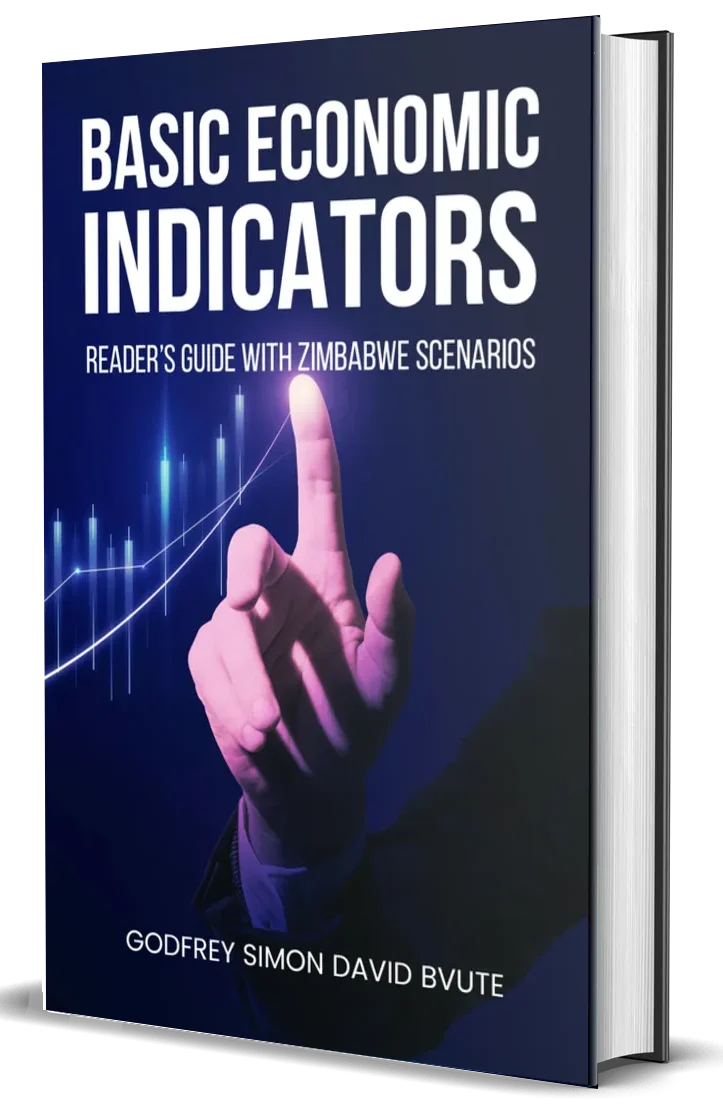In the quest to build a fair and prosperous society, understanding income inequality is essential. One of the most widely used tools to assess this is the Gini Coefficient, a statistical measure explored in-depth by Godfrey Simon David Bvute in Basic Economic Indicators: Reader’s Guide with Zimbabwe Scenarios. For Zimbabwe, the Gini Coefficient tells a complex and pressing story.

What is the Gini Coefficient?
The Gini Coefficient is a number between 0 and 1 (or expressed as a percentage between 0% and 100%) that reflects income or wealth distribution within a population:
- 0 means perfect equality—everyone has the same income.
- 1 means perfect inequality—one person has everything, and everyone else has nothing.
Zimbabwe’s Gini Coefficient is estimated at 50.3% (2022), placing it among the most unequal societies in the Southern African region. For context, South Africa sits at 63.0%, and Namibia at 59.1%, while Tanzania is comparatively better at 40.5%.
What Does This Mean for Zimbabwe?
A high Gini score like Zimbabwe’s indicates a large gap between the rich and the poor. According to projections cited by Bvute, 7.5 million Zimbabweans live on less than US$2.15 per day, while over 11 million live on less than US$3.65 daily. This reflects not just low income levels but deep structural inequality.
Such disparities affect access to health, education, and basic opportunities. High inequality also leads to:
- Lower economic growth (as the majority cannot fully participate in the economy)
- Social unrest and political instability
- Barriers to development, even when GDP shows growth
Gini vs GDP: A Reality Check
As Bvute notes, relying on GDP alone can be misleading. A rising GDP may suggest growth, but when the Gini Coefficient remains high, that growth isn’t reaching most people. Zimbabwe’s 2022 GDP per capita was just US$1,306, which is only 10% of the global average. This low figure, combined with high inequality, paints a more realistic picture of hardship than GDP alone.
Measuring Inequality the Right Way
The book clearly explains the Lorenz Curve, a graphical representation used to derive the Gini Coefficient. The further the curve dips from the 45° equality line, the greater the inequality. It’s a simple but powerful visual tool to show just how skewed income distribution is.
A Call to Action
Understanding the Gini Coefficient isn’t just for economists—it’s for everyone who cares about fairness, development, and opportunity. Bvute emphasizes that better-informed citizens and policymakers can use such tools to demand equitable reforms and design smarter policies.
In a country where informal employment is high and many economic activities go unmeasured, tackling inequality requires:
- Investment in education and health
- Support for smallholder farmers and informal businesses
- Progressive taxation and efficient public service delivery
- Accurate data collection and real-time monitoring
To truly understand the forces shaping Zimbabwe’s future, and how to measure them, grab a copy of Basic Economic Indicators: Reader’s Guide with Zimbabwe Scenarios. It’s not just a book—it’s an economic compass.